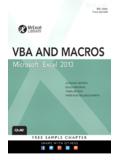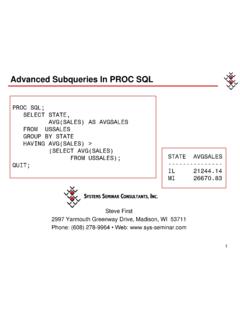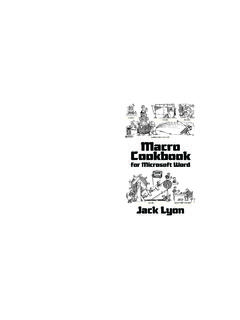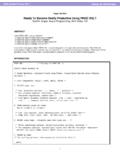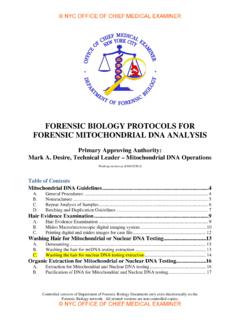Transcription of 188-2007: Using SAS® to Determine Sample Sizes for ...
1 1 Paper 188-2007 Using SAS to Determine Sample Sizes for traditional 2-Stage and Adaptive 2-Stage Phase II Cancer Clinical Trial Designs Adrienne Groulx, Kyung-hee (Kelly) Moon, St. Clare Chung Scian Services Inc, Etobicoke, Ontario, Canada ABSTRACT In a Phase II clinical trial, the primary objective is to Determine the efficaciousness of a drug, such that decisions to proceed with further studies and development of the drug are warranted. To detect a measurable effect in an investigation product, a two-stage design is often used, whereby an interim look at the data may result in the decision to terminate the trial early, or proceed with the second stage of the study.
2 The Simon s two-stage design to Determine Sample size is one that is widely used and accepted in Phase II cancer trials. A number of alternative methods that implement adaptive aspects to the design have also been published and used in trials. This paper will look specifically at Lin and Shih s adaptive method, which include extensions to Simon s optimal and minimax designs. Currently, PROC POWER in SAS v9 does not produce Sample size calculations for two-stage designs, which led to the motivation behind this paper. The SAS codes for the traditional and adaptive designs have been separated into two macros, %SIMON and %ADAPTIVE, designed to produce multiple Sample size outputs which satisfy user-specified constraints.
3 This paper is intended for intermediate SAS users. INTRODUCTION If a biostatistician were to tell you what question is most frequently asked of them, it would likely be related to Sample size and power calculations. Certainly for Phase II cancer trial designs, a number of online web tools and Sample size software are available to help with the study design, where one could simply plug in numbers and have power calculations and Sample Sizes appear on screen. The biostatistician, however, should be able to validate these numbers by understanding how they are derived, and explain how and when they should be used.
4 This is the reason for creating the macros %SIMON and %ADAPTIVE for two-stage Phase II designs. For the purposes of this paper, only single-arm designs are explored. As Phase II oncology studies offer the first glance into the efficacy of an investigational drug, a common endpoint used in these trials is tumour response rate, as defined by the lead clinician. If the response rate exceeds the minimum criteria at the conclusion of the trial, then a Phase III trial may be considered. The following notations will be used throughout the paper: p0 : An unacceptable response rate.
5 P1 : The target response rate. : The false-positive rate, , is the probability of declaring the drug effective when the true response probability is p0. : The false-negative rate, , is the probability of declaring the drug as not effective when its true response probability is the target response rate p1. n: The total number of subjects to be evaluated. r: The upper-limit of the number of responses in n patients such that futility of the drug is concluded (ie. r+1 is the minimum number of responses in n patients that would warrant further development of the drug) SINGLE STAGE DESIGN In a single stage Phase II clinical trial, a pre-determined number of patients are treated with the investigational drug, and the response rate is measured.
6 A critical value, typically found Using binomial exact methods, is specified in SASG lobalForum2007 Statistics and Data Analysis 2 advance, such that if the number of responses is less than this critical value, than the drug is deemed ineffective in the population targeted. Example 1: Consider a SAS example of a single stage design where p0= , p1 = , and = Using the ONESAMPLEFREQ statement in PROC POWER, we solve for N based on powers ranging from 75% to 99%: proc power; onesamplefreq TEST=ADJZ METHOD=NORMAL sides=1 nullproportion = proportion = ntotal =.
7 Power = to by ; plot x=power xopts=(ref=.8 .85 .9 .95 crossref=yes); run; The graph to the right is produced, and can be used to Determine the Sample size which best corresponds to the desired power of the study. For example, in order to achieve 90% power to detect at least 20% improvement in response rate, we require that Ntotal= patients (or 47, as we would want to round up to an integer to achieve at least 90% power). Next, the critical value for the go/no-go decision rule is found by replacing the TEST=ADJ METHOD=NORMAL statement in the original SAS code to METHOD=EXACT.
8 By entering the value for N (ex. Ntotal=47) into our SAS code, we find that the critical upper value, CU, is 15. That is, H0: p p0 is rejected when the number of responses is greater than or equal to 15. Equivalently, we would conclude futility of the drug if fewer than 15 responses in 47 patients are observed. Single stage phase II cancer clinical trials are generally not as favorable as two-stage designs. The reason for this comes from the ethical dilemmas that they pose. Namely, a single stage design runs the risk of exposing too many sick patients in need of efficacious drugs to potentially inactive and dangerous drugs.
9 This risk was the motivation behind the creation of two-stage Phase II clinical trials. SIMON S OPTIMAL AND MINIMAX 2-STAGE DESIGN In Simon s two-stage design, after a pre-determined number of patients have been treated, the trial is paused, and the response rate is evaluated. If a pre-specified minimal response rate has not been achieved in the first stage of the trial, it is concluded that the treatment is not worth pursuing and the trial is ended. Otherwise, enrollment continues until a pre-determined number of additional patients are accrued. At the conclusion of the clinical trial, the drug will be declared effective or ineffective.
10 Simon s optimal design is one which minimizes the expected Sample size given a poor response rate. If the numbers of patients studied in the first and second stage are denoted by nl and n2 respectively, then the expected Sample size is E(N | p) = E(N) = nl + (1 - PET) n2, SASG lobalForum2007 Statistics and Data Analysis 3 where PET represents the probability of early termination after the first stage. If after the first stage, the number of responses is fewer than or equal to a pre-determined value, r1 of n1, then PET = B(r1; n1, p), where B denotes the cumulative distribution function evaluated at r1 for a random variable that is binomially distributed with parameters n1 and p, the true probability of response.











